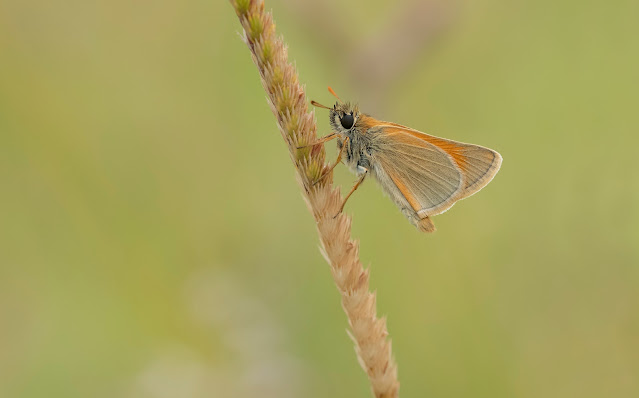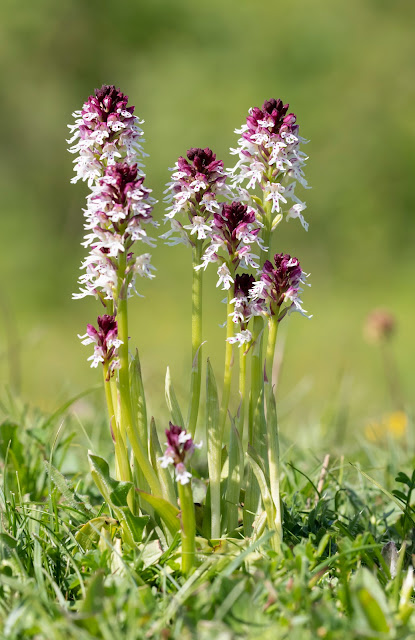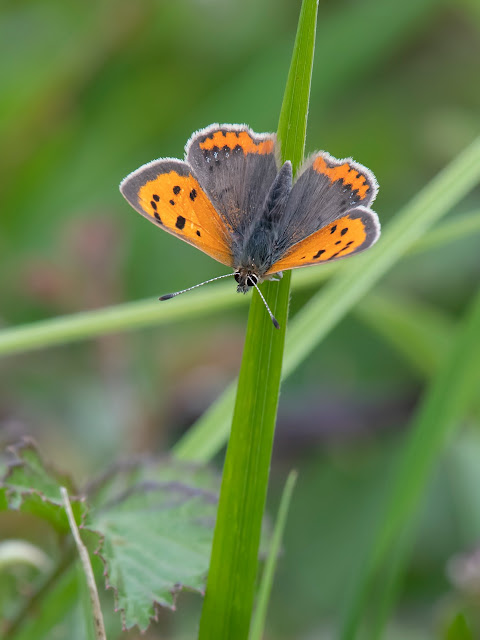Now that Lisa has seen all of the normal Sussex species of butterflies, we are venturing a little further afield to see other British species new to her.
It is also an excuse for myself to be acquainted again with species that I have not seen too often. A month ago it was one of my favourites, the Marsh Fritillary. Our planned trip to Kent for the Heath Fritillary unfortunately didn't go ahead this year, but a trip to Somerset and Dorset was achieved, and these species I have neglected over the years, with only two visits to see the Large Blue, and just a single visit to Dorset for the Lulworth Skipper.
As we had decided on an overnight stay near the Large Blue site, we didn't even have to leave home too early, especially as we were starting from Worthing. We even had time for a long river walk at Blandford Forum on the way giving us a couple of views of Kingfisher as well as several dragonfly species.
After Blandford Forum we drove to the pub where we were staying overnight to drop off some of our baggage.
It certainly didn't take long for Lisa to see her very first Large Blue when we arrived at the butterfly site with several seen after just a few steps onto the reserve.
Large Blue.
Most of the Large Blue were showing signs of wear and tear, which was a shame, but hopefully it has given us an incentive to go a little earlier in the season next time. By carefully walking around we did manage to spot a handful of butterflies that were looking a little fresher, and one gave us both several opportunities when it stopped to nectar on a Thistle flower-head.
Both sides of a Large Blue on flower-head.
After a few hours spent in the meadows enjoying both the Large Blues and other butterfly species, and hoping to see some roosting we felt it was time to head back to the pub for our evening meal before it was too late. It was a fabulous evening and after eating it was still warm enough for sitting in the pub garden.
The following morning, it was back to the Large Blue to see if we could find some before they woke up too much. However, just as we reached the parking layby the sun came out and by the time we had walked up to the reserve the butterflies were very much awake. We then once again walked around hoping to find more fresh individuals. A mating pair of Marbled White was a nice find, and eventually a reasonable quality Large Blue showed itself.
Large Blue.
I have never managed a decent open wing shot of a Large Blue, and I must confess, that is really what I was hoping for at the start of the trip. Unfortunately, I still haven't got a decent open wing shot of a Large Blue, with the only one that did open its wings being a bit tatty and not in a particularly nice spot.
Female Large Blue.
Another insect that was at the reserve was a Crescent Plume. A species that I can't recall seeing before, so I did spend a little time with one of these that settled nearby.
Crescent Plume.
Eventually we decided to call it a day with the Large Blues, and to head to West Lulworth for the Lulworth Skipper. This species is only found along the Purbeck coast between Weymouth and Swanage. It's actually 190 years since it was first discovered in this area, and it was also the subject of my original first post on this blog!! (not 190 years ago)!! when Nigel and I made the trip down there 10 years ago. That was my only previous experience with this species, and that time I also managed some reasonable shots of the males and females. This time I only managed to get shots worth keeping of the male. However, the main purpose of the trip was for Lisa to see this tiny skipper, and we certainly didn't need to search for long as there were 100s of them in the small area we covered. Once again, the condition of most was a little worn, but this species does have a very long flight season, so there were sure to be some fresher ones out there.
Eventually Lisa spotted a male that looked pretty fresh, and after she had taken a few images I had a go. Although it did keep moving, it didn't fly far before settling again. All of the skippers kept landing deep in the grass, which made it very difficult to get good shots, but this little male did settle just the once higher up the grass and I managed a couple of quick shots of it in a clearer position.
Male Lulworth Skipper.
The only problem with stalking the skippers in the long grasses was the possibility of picking up ticks. One point when I stopped for a drink of water I took off my rucksack and found a tick crawling over the rucksack. We then realised that despite being careful there was a chance we may have collected some.
At the end of the day we sat down on the benches just below the car park and celebrated with some gorgeous home made Devon ice cream.
It was the following morning that, despite thorough searches that had revealed no ticks the previous evening, that we had indeed managed to collect a few with Lisa coming out on top 11-4. Her blood is obviously more tasty than mine!! At least we have now had a lot of practice at removing ticks!!








.jpg)






.jpg)



.jpg)



























